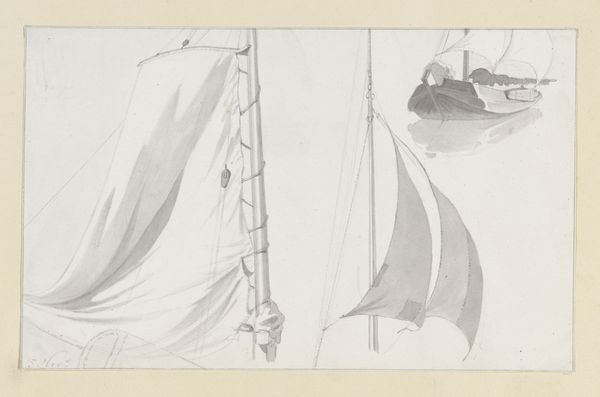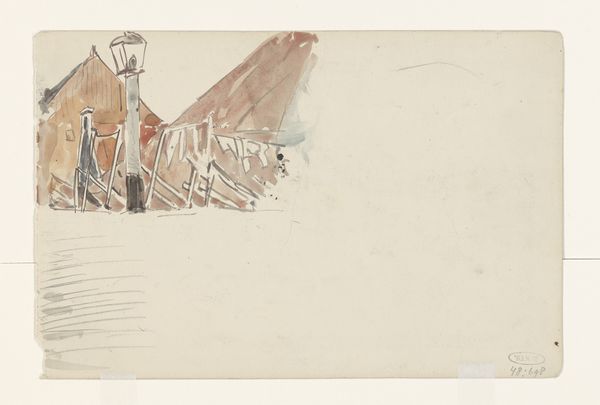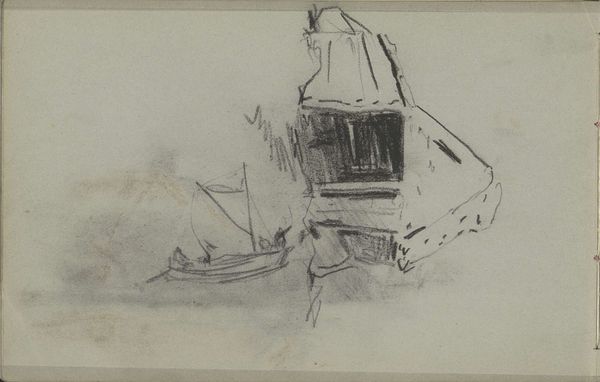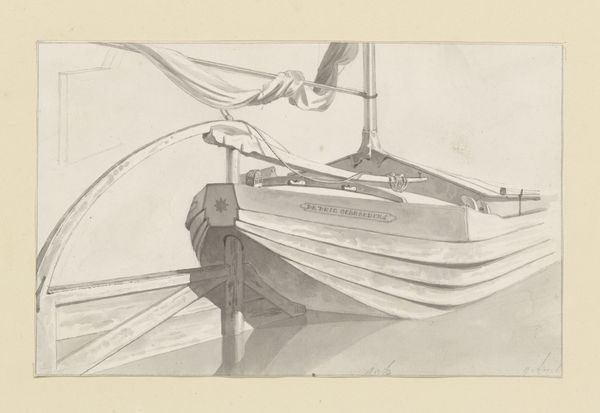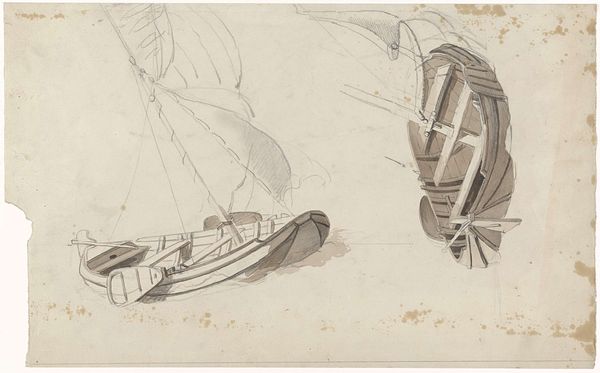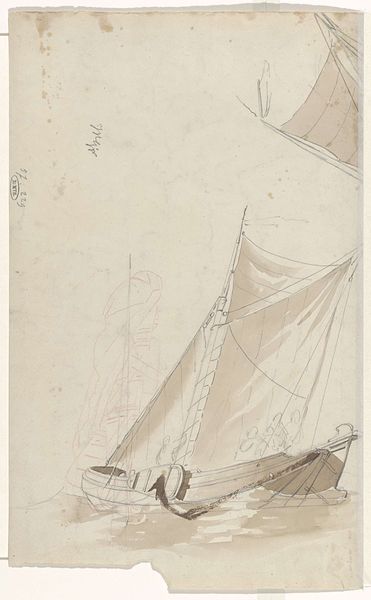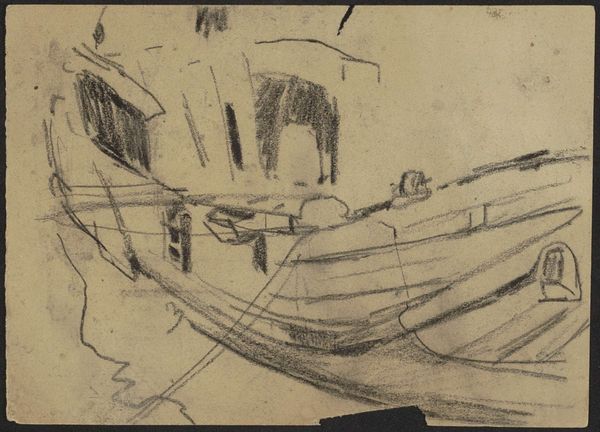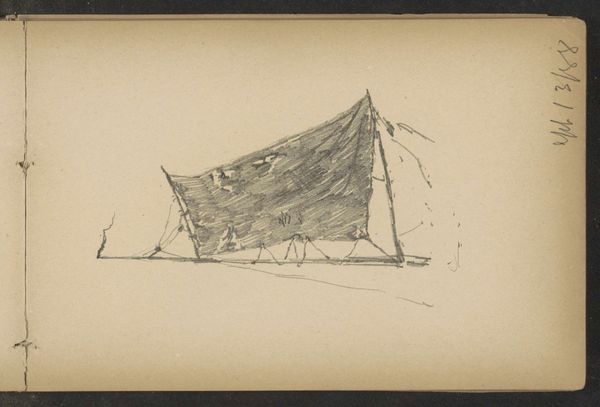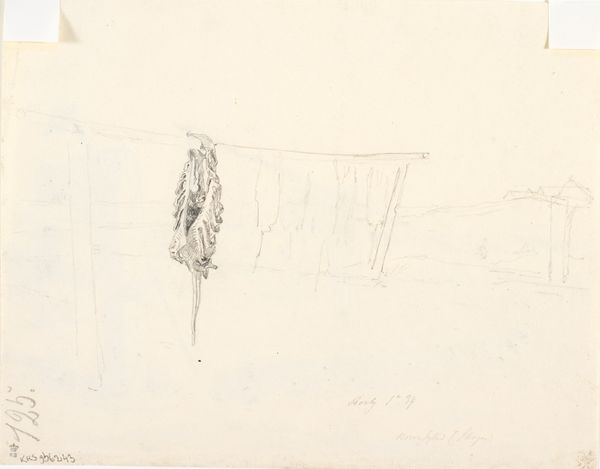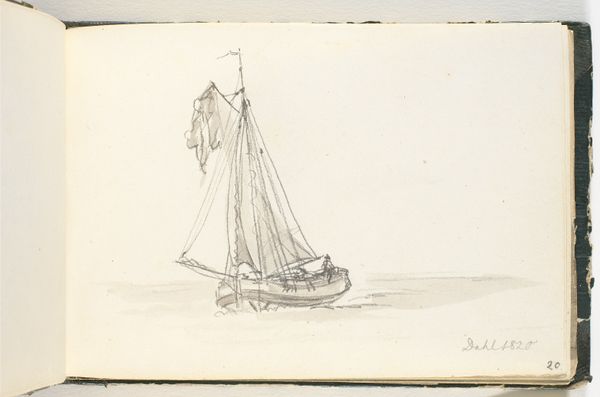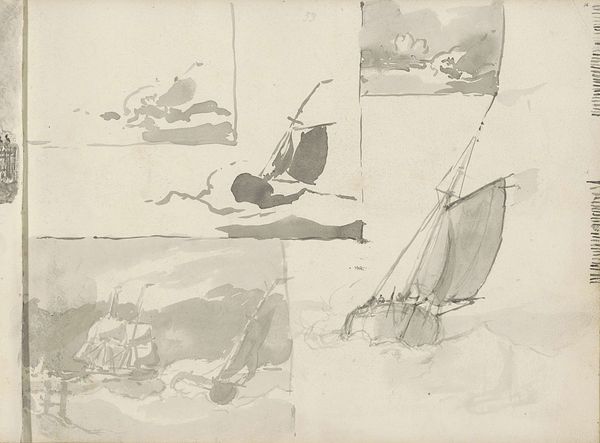
drawing, watercolor, pencil
#
drawing
#
pencil sketch
#
landscape
#
watercolor
#
pencil drawing
#
pencil
#
watercolor
#
realism
Copyright: Rijks Museum: Open Domain
Editor: Here we have Adrianus Eversen’s "Gezicht op een aangemeerd zeilschip," a pencil and watercolor work that historians place somewhere between 1828 and 1897. I’m struck by its delicate nature; the sails look so fragile. How do you interpret this drawing? Curator: Considering Eversen’s likely economic and social status as a bourgeois artist producing for a market, I see a depiction of maritime labor stripped of its physical demands. It focuses instead on the crafted aspects. Think about the process, the sourcing of materials for both ship and drawing. Editor: So you’re suggesting he’s focusing on the "making" aspect, not necessarily the toil involved in sailing itself? Curator: Precisely. The labor in Eversen's production mirrors the skilled construction of the ship itself. It becomes a study in craft and material culture. The watercolor and pencil become analogous to sailcloth and wood. Were these readily available? Did certain pigments cost more? Editor: That makes me consider the drawing in a totally new light! It moves beyond a simple representation of a boat. Curator: It does indeed. We should think of the implications of trade that supported the creation of artwork like this one, or who purchased or had access to a pencil drawing. Editor: I never considered the materials this deeply. I’ll be sure to remember that production and materiality are just as much subject matter as what's represented on the page. Curator: Exactly. And that understanding shapes not only the image but the lives interwoven with its creation.
Comments
No comments
Be the first to comment and join the conversation on the ultimate creative platform.
